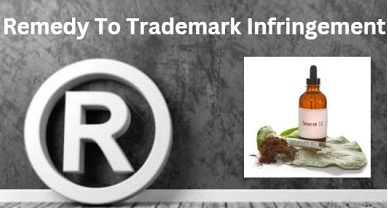Dilution of Fictional Characters: A Remedy to Trademark Infringement
Introduction
In the conventional sense, trademark law requires the mark to essentially be a word or a logo. However, there have been significant advancements in the interpretations of trademark law over the years, with one such advancement being protection of fictional characters under trademark law. In lieu of a plethora of judgements, it is now established law that a fictional character could be registered as a trademark if it acts as a source of representation of the owner. Once a fictional character is recognized as a trademark, the owner gets entitled to sue any other person who uses the mark in an unauthorised manner. The owner has to prove that such unauthorised use causes a likelihood of confusion.

The laws of Dilution
Dilution is another effective means by which the author could secure trademark protection with respect to his fictional character.[1] The theory of dilution is widely regarded to have first come up in Frank I. Schechter’s 1927 Harvard Law Review article, in which he explained dilution as the gradual elimination of the distinctive image of a trademark in the minds of the public, on account of the use of the trademark for non-competing goods.[2] Dilution had been a congregation of inconsistent and unsettled state law doctrines in the US, prior to 1995. It was also contended by scholars that dilution would go on to replace copyright law as well as conventional trademark protection, since it could create trademark rights in gross by permanently removing fictional characters in the public domain.[3] However, irrespective of these fears, the Federal Dilution Act of 1995 and the Federal Dilution Revision Act of 2006 have compelled courts to recognize dilution as a cause of action at the federal level.[4]
The essentials requirements to avail of the remedy of dilution
The protection of a fictional character under the laws of dilution are quite distinct from the modes of protection provided under other trademark law doctrines. For instance, one of the primary essentials that the mark must comply with, in order to secure protection under dilution law, is that it must be famous.[5] Once the court, based on an unpredictable and difficult calculation, reaches the conclusion that the mark is famous, dilution provides effective protection to the fictional character that extends to the non-competing goods as well.[6] However, it is to be noted here that such protection shall only exist in the absence of the likelihood of consumer confusion. While litigation involving the dilution of fictional characters has seldom taken place, a few case laws effectively elaborate the sweeping nature of dilution protection. In Danjaq LLC v. Sony Corporation[7], the assignee of all U.S. television and film rights to the James Bond character sought to prohibit Sony from going about its plan of producing a series of James Bond movies. An injunction was granted by the court, based on the ground that such act shall result in dilution by blurring.[8] In Brown v. It’s Entertainment Inc.[9], the fictional character ‘Arthur’, a cartoon aardvark, was granted similar protection. It was found that the defendants were using Arthur costumes for promotional and live entertainment purposes. The Court held that such unauthorised use of the Arthur character would diminish the distinctiveness that the plaintiffs enjoy with respect to the character and thereby cause dilution by blurring. Moreover, such unauthorised use could also cause blurring by tarnishing, leading to a loss of credibility, consumer interest and public affection.[10]
Mixed commentaries on the sweeping protection granted by dilution
While it is true that protection by dilution is limited to marks that are famous, the aforementioned cases are elaborative of the sweeping protection that may be granted, once the court reaches the conclusion that the mark is famous. According to some commentators, federal trademark dilution ensures that fictional characters that have garnered immense goodwill and reputation are not cloned by copiers or used for undignified service.[11] Other commentators, on the other hand, contend that such a widespread ban on the unauthorised use of fictional characters, even in the event of no danger of consumer confusion, would be deleterious to the conventional goals of trademark law.[12] Therefore, the following conclusion could be drawn: while it cannot be denied that protection by dilution would help secure the source-identifying capacity of the world’s most popular and influential fictional characters, it is also very possible that it would act as an unnecessary layer of protection that would limit the public’s use of the character.
Fixing the lacunae in the laws of dilution
However, in order to limit the scope of dilution, certain exceptions to the Federal Trademark Dilution Revision Act, 2006[13] have been formulated. These exceptions[14] explicitly state that any act that comes within the ambit of such exceptions shall not be actionable under dilution. In light of this and in order to determine whether the concerned claim is actionable or not, it is necessary to respect the weight of these exclusions. An instance in this regard could be the instance when a Saturday Night Live skit imagined the use of a James Bond character. An ageing Pierce Brosnan, an actor who once himself dawned the cape of the secret agent, acted out the character by performing action hero stunts around a retirement community. If the aforementioned exceptions were not to be taken into account, the Court would, in all probability, hold that with James Bond being a famous character, an unauthorised reproduction of the character in a television skit would amount to dilution by blurring or tarnishing. However, in light of these exceptions, parodies are included within them and are therefore, not actionable.[15]
Conclusion
With dilution still being at a nascent level of development, it is essential that courts formulate a consistent jurisprudence that delves into a set standard for recognizing fictional characters as ‘famous’ and imbues the aforementioned exceptions with adequate strength.[16]
Author: Vedant Saxena, in case of any queries please contact/write back to us at support@ipandlegalfilings.com or IP & Legal Filing.
[1] 15 U.S.C. § 1125(c) (2006).
[2] Frank I. Schechter, ‘The Rational Basis of Trademark Protection’ (1927) 40 HARV. L. REV. 813, 825.
[3] Michael T. Helfand, ‘When Mickey Mouse is as Strong as Superman: The Convergence of Intellectual Property Laws to Protect Fictional Literary and Pictorial Characters’ (1999) 44 STAN. L. REV. 623, 635–38.
[4] 15 U.S.C. § 1125(c) (2006).
[5] Ibid. § 1125(c)(2)(A).
[6] Ibid. § 1125(c)(1).
[7] 49 U.S.P.Q.2d 1341, 1343–44 (C.D. Cal. 1998).
[8] Ibid.
[9] 34 F. Supp. 2d 854, 860 (E.D.N.Y. 1999).
[10] Ibid.
[11] Kristen Knudsen, ‘Tomorrow Never Dies’ (2000) 2 VAND. J. ENT. L. & PRAC. 13, 17.
[12] Vincent N. Palladino, ‘Reigning in Trademark Dilution Claims’ (1999) 1 N.Y.L.J. 1, 8.
[13] 15 U.S.C. § 1125(c) (2006).
[14] 15 U.S.C. 1125(c)(3) (2006).
[15] 15 U.S.C. § 1125(c)(3)(A)(ii) (2006).
[16] Ibid. § 1125(c)(3).


